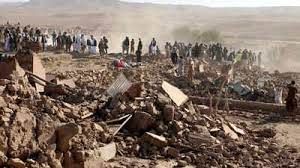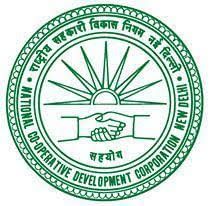UPSC Daily Current Affairs- 11th October 2023 | Current Affairs & Hindu Analysis: Daily, Weekly & Monthly PDF Download
GS-I
Gandhi’s Stance on Israel and Palestine: A Closer Look
Subject: Modern History

Why in News?
Mahatma Gandhi’s perspective on the Israel-Palestine issue has been a topic of extensive debate over the years.
- His article, ‘The Jews,’ written in 1938, offers insights into his complex views on the matter.
- Gandhi’s sentiments regarding the Jewish people, the Holocaust, and the creation of a Zionist state in Palestine are subjects of scrutiny and admiration, shedding light on his unwavering commitment to non-violence.
Gandhi’s Sympathy for the Jewish People
- Historical Persecution: Gandhi expressed deep sympathy for the Jewish people who had endured historical persecution due to their religion. He likened their mistreatment by Christians to the plight of untouchables in Hinduism.
- German Persecution: Gandhi went further, describing the German persecution of Jews as unparalleled in history. He voiced concern over Britain’s appeasement policy toward Adolf Hitler and asserted that a war against Germany, if necessary to prevent Jewish persecution, would be justifiable in the name of humanity.
Opposition to a Zionist State in Palestine
- Violence and Settlement: Gandhi firmly opposed the imposition of Jews on Arabs in Palestine, condemning it as inhumane. He believed that the settlement of Jews, facilitated by Britain, was inherently violent and could not be achieved through force.
- Need for Arab Goodwill: Gandhi insisted that Jews could only settle in Palestine with the goodwill of the Arab population, without the assistance of British military force.
- Antithetical to Jewish Rights: He argued that the idea of a Jewish homeland in Palestine contradicted the Jews’ struggle for rights in other parts of the world. Gandhi questioned whether Jews, who had settled globally, would appreciate being compelled to leave other regions for a singular homeland.
Influence on India’s Foreign Policy
- Wider Anti-Imperialist Sentiment: Gandhi’s stance on Palestine resonated with leaders across the Arab world and anti-imperialist movements globally. The Balfour Declaration of 1917, promising Jews a homeland in the British Mandate of Palestine, drew criticism.
- Impact on Nehru: Jawaharlal Nehru, India’s first Prime Minister, was profoundly influenced by Gandhi’s views. Gandhi’s anti-imperialism and his perspective on the Israel-Palestine issue shaped India’s foreign policy for decades.
- UN Resolution and Recognition: India voted against UN Resolution 181, which proposed the partition of Palestine between Jews and Arabs. Although India recognized the state of Israel in 1950, it was not until 1992, under Prime Minister P. V. Narasimha Rao, that official diplomatic relations were established.
Conclusion
- Mahatma Gandhi’s complex and empathetic stance on the Israel-Palestine issue reflects his unwavering commitment to non-violence and his deep sympathy for the Jewish people.
- His opinions on the matter, rooted in anti-imperialism and a profound sense of humanity, played a pivotal role in shaping India’s foreign policy and continue to be subjects of historical significance and debate.
Source: The Hindu
Afghanistan Earthquake
Subject: Geography

Why in News?
A 6.3 magnitude earthquake struck about 40km from the western city of Herat, Afghanistan recently.
Background:-
- In Afghanistan, the death toll from strong earthquakes has risen to over 2,400 as search and rescue efforts continue amid reports that some people may be trapped under collapsed buildings.
About Earthquake:-
- An earthquake is the shaking or trembling of the earth’s surface.
- It is caused by the seismic waves or earthquake waves that are generated due to a sudden movement (sudden release of energy) in the earth’s crust (shallow-focus earthquakes) or upper mantle (some shallow-focus and all intermediate and deep-focus earthquakes).
- A seismograph, or seismometer, is an instrument used to detect and record earthquakes.
- Hypocentre/Focus: The point where the energy is released.
- Epicentre: The point on the surface directly above the focus.
- Isoseismic line: A line connecting all points on the surface where the intensity is the same.
Causes of Earthquakes:-
- Fault Zones
- Plate tectonics
- Volcanic activity
- Human-Induced Earthquakes
Types of Earthquakes:-
Tectonic Earthquakes
- The most common ones are tectonic earthquakes.
- The Earth is made of four basic layers (generally three): a solid crust, a hot, nearly solid mantle, a liquid outer core, and a solid inner core.
- Tectonic plates (Lithospheric plates) are constantly shifting as they drift around on the viscous, or slowly flowing, mantle layer below.
- When tectonic plates move, it also causes movements at the Anatolian Plate
- Thus, the slipping of land along the faultline along convergent, divergent and transform boundaries causes earthquakes.
Volcanic Earthquake
- Earthquakes produced by stress changes in solid rock due to the injection or withdrawal of magma (molten rock) are called volcano earthquakes.
Human Induced Earthquakes
- In areas of intense mining activity, sometimes the roofs of underground mines collapse causing minor tremors. These are called collapse earthquakes.
- Ground shaking may also occur due to the explosion of chemical or nuclear devices. Such tremors are called explosion earthquakes.
Source: AIR
GS-II
National Cooperative Development Corporation (NCDC)
Subject: Governance

Why in News?
Union Home Minister and Minister of Cooperation addressed the 89th General Council meeting of the National Cooperative Development Corporation (NCDC) in New Delhi recently.
About National Cooperative Development Corporation (NCDC):-
- Establishment: 1963.
- Ministry: Ministry of Cooperation.
- HQ: New Delhi.
- The National Cooperative Development Corporation (NCDC) was established by an Act of Parliament in 1963 as a statutory Corporation.
Organization & Management:-
- The Management vests in 51 members widely represented General Council to give shape to its policies and programmes and the Board of Management with 12 members to cater to day-to-day activities.
Functions:-
- Planning, promoting, and financing programmes for the production, processing, marketing, storage, export, and import of agricultural produce, foodstuff, and certain other notified commodities e.g. fertilizers, insecticides, agricultural machinery, lac, soap, kerosene oil, textile, rubber, etc.
- Supply of consumer goods and collection, processing, marketing, storage, and export of minor forest produce through cooperatives, besides income generating stream of activities such as poultry, dairy, fishery, sericulture, handloom, etc.
- Assist different types of cooperatives and to expand its financial base.
- Finance projects in the rural industrial cooperative sectors and for certain notified services in rural areas like water conservation, irrigation, micro irrigation, agri-insurance, agro-credit, rural sanitation, animal health, etc.
- Loans and grants are advanced to State Governments for financing primary and secondary level cooperative societies and direct to the national level and other societies having objects extending beyond one State.
- The Corporation can also go in for direct funding of projects under its various schemes of assistance on fulfillment of stipulated conditions.
Source: PIB
Indian Ocean Rim Association (IORA)
Subject: International Relations

Why in News?
Sri Lanka set to take over chairmanship of Indian Ocean Rim Association during 23rd Council of Ministers' Meeting.
About Indian Ocean Rim Association:
- It was established in 1997 as an intergovernmental organisation of States on the rim of the Indian Ocean.
- Member countries:
- It has members from Africa, West Asia, South Asia, Southeast Asia , Europe and Oceania.
- The Association’s membership has expanded to 23 member states and 11 dialogue partners.
- Asia: India, Bangladesh, Indonesia, Iran, Malaysia, Maldives, Oman, Singapore, Sri Lanka, Thailand, United Arab Emirates and Yemen.
- Africa: Kenya, Madagascar, Mozambique, Somalia , South Africa, Tanzania, Comoros, Mauritius, Seychelles.
- Oceania: Australia.
- Europe: France
- Its apex body is the Council of Foreign Ministers (COM) which meets annually.
- IORA has identified six priority areas namely: Trade and Investment, Maritime Safety and Security, Fisheries Management, Disaster Risk Management and Blue Economy.
- The secretariat is based in Ebène Mauritius and is overseen by a secretary-general who is appointed for a three-year period.
Source: PIB
We need evidence-based traditional medicine
Subject: Polity and Governance

Why in News?
The recent case where a manufacturer of indigenous drugs filed a lawsuit against a medical practitioner over a social media thread has ignited discussions in medical circles.
Central idea
- The recent case prompts us to explore the broader questions surrounding the role of traditional medicine in our modern world, the principles of evidence-based medicine, and the steps governments should take to ensure the health of their populations.
The Evolution of Modern Medicine
- Early Medical Practices: In ancient civilizations, various cultures developed their own medical systems, often rooted in traditions and observations. These practices formed the foundation upon which modern medicine would later build.
- Scientific Renaissance: The Renaissance period in Europe marked a resurgence of interest in science and inquiry. This era laid the groundwork for the scientific approach that modern medicine would adopt.
- 19th Century Advancements: The 19th century witnessed significant strides in medical science and technology. Innovations such as the microscope, anesthesia, and surgical techniques transformed medical practices.
- Evidence-Based Medicine: Modern medicine became truly science-based in the late 19th century, when advances in technology allowed for a more accurate understanding of human physiology, health, and disease. The adoption of evidence-based approaches has become a hallmark of modern medical practice.
- Technological Marvels: The 20th century saw unprecedented developments in medical technology, including the advent of diagnostic imaging, organ transplantation, and the establishment of pharmaceutical research. These advancements revolutionized patient care.
- Global Collaboration: The latter half of the 20th century and the early 21st century have been characterized by increased global collaboration in healthcare. Medical knowledge, research, and innovations have transcended geographical boundaries, leading to improved healthcare outcomes worldwide.
The Global Nature of Modern Medicine
- Global Scientific Collaboration: Researchers worldwide work together to advance medical knowledge and develop innovative treatments.
- Access to Innovations: Patients globally benefit from medical breakthroughs, ensuring wider access to cutting-edge treatments and technologies.
- Healthcare Diplomacy: Many countries engage in healthcare diplomacy, offering aid and expertise to regions in need and fostering goodwill.
- International Healthcare Workforce: Healthcare professionals from diverse backgrounds contribute their expertise globally, addressing healthcare disparities.
- Cross-Cultural Integration: Modern medicine respects diverse healthcare approaches, integrating traditional medical systems and practices from different cultures.
- Pandemic Response: The COVID-19 pandemic highlighted global health interconnectedness, emphasizing collaborative efforts in vaccine development, information sharing, and medical aid distribution.
Traditional Medicine in the Modern World
- Traditional medicine, which includes systems like Ayurveda, Unani, and Siddha, continues to coexist alongside modern medicine. These traditional systems have a long history and cultural significance. However, their place in the modern world is subject to several challenges:
- Scientific Scrutiny: Traditional medicine often lacks the rigorous scientific validation that modern medicine adheres to. This can hinder its integration into the mainstream healthcare system.
- Safety and Quality Control: Ensuring the safety and quality of traditional medicines can be a concern. Contaminants, inconsistent formulations, and a lack of standardized production processes can lead to safety issues.
- Lack of Standardization: Traditional medicine formulations can vary widely from one source to another, making it difficult to assess their efficacy consistently.
- Cultural and Ethical Considerations: Traditional medicine is deeply rooted in cultural and traditional beliefs. Balancing cultural practices with modern medical standards can be complex, as some treatments may hold cultural significance but lack scientific validation.
- Education and Training: There is a need for comprehensive education and training programs to ensure that practitioners of traditional medicine are well-informed about modern medical standards and safety protocols.
Challenges in Evaluating Ayurvedic Medicines
- Complex Formulations: Ayurvedic medicines often consist of multiple herbs and ingredients, making it challenging to isolate and study the specific active components responsible for their effects.
- Diverse Combinations: Ayurvedic formulations can vary widely in their combinations of herbs and minerals. Understanding how these components interact and their individual contributions to treatment can be complex.
- Lack of Standardization: There is a lack of standardized protocols for the production and quality control of Ayurvedic medicines, affecting the consistency and safety of products.
- Integration with Modern Science: Bridging the gap between traditional Ayurvedic knowledge and modern scientific methods is essential. Developing research methods that respect Ayurvedic principles while adhering to contemporary scientific standards is a challenge.
The government’s role in promoting evidence-based medicine
- Regulation and Oversight: Governments should establish regulatory bodies to oversee traditional medicine practices, ensuring they meet safety and quality standards. This includes setting guidelines for the manufacturing, labeling, and marketing of traditional medicines.
- Research and Funding: New investigational methods and trial designs that can evaluate Ayurvedic therapies without undermining the classical basis of administering them must be worked out. The Ministry of AYUSH must facilitate this.
- Public Awareness: Governments can educate the public about the benefits and limitations of traditional medicine, promoting informed choices when seeking healthcare.
- Integration with Modern Healthcare: Promoting collaboration and integration between traditional and modern healthcare systems can provide patients with a more comprehensive range of treatment options.
Way forward: Maintaining an Open Mind
- Balanced Perspective: Maintain a balanced view when assessing traditional medicine alongside modern healthcare, considering both potential benefits and limitations.
- Open-mindedness: Embrace open-mindedness in exploring traditional practices for potential insights, fostering an environment of curiosity and exploration.
- Informal Verifications: Acknowledge the value of centuries of informal verifications in traditional medicine, recognizing that these practices have been refined through generations of use.
- Cultural Significance: Traditional medical systems are often deeply intertwined with cultural heritage and beliefs. Respecting and acknowledging this cultural significance is essential when considering their place in modern healthcare.
- Historical Insights: The reference to artemisinin, a Nobel-winning anti-malarial drug derived from a 1,600-year-old text of Traditional Chinese Medicine, underscores the potential for valuable discoveries when traditional knowledge is integrated with modern scientific methods.
- Collaboration: Encourage collaboration between traditional practitioners and modern scientists, promoting dialogue and cooperation for the advancement of healthcare.
- Evidence-based Approach: Subject traditional knowledge to rigorous scientific evaluation to ensure safety and efficacy, aligning with the principles of evidence-based medicine to validate its effectiveness.
Conclusion
- The coexistence of traditional and modern medicine systems is a testament to the diversity of human healthcare practices. It is crucial to embrace a nuanced approach that recognizes the strengths and limitations of each system, fostering an environment where science and tradition can collaborate for the betterment of public health.
Source: Indian Express
GS-III
Eumasia venefica
Subject: Environment and Ecology

Why in News?
Researchers from the Zoology Department at St. Thomas College (Autonomous), Thrissur, have discovered a new species of bagworm moth, Wizard Bagworm, from near the Nariyampara falls in Idukki district.
About Eumasia venefica:
- The new species has been named due to the peculiar shape of its bag, which resembles a wizard’s hat.
- It is the fourth species of this genus to be discovered from India.
- Features:
- It has the clever camouflage employed to escape predators.
- Larval cases of this species are found attached to rocks covered with lichens.
- The cases attach to each other and form a lichen covered colony.
- The larval bags look like a ‘witch’s hat’ because of a disc-like anterior and a tubular posterior part.
- It is not a polyphagous pest as its larvae only feed on the algae and mosses on the rocks.
What is Bagworm moth?
- They are a family of moths belonging to the order Lepidoptera and are known for their protective larval cases.
- These moths are found worldwide, but primarily in North America and Africa.
- It is a perennial moth like insect that resides on a number of evergreen as well as junipers in its larva stage.
- They are named for the baglike cases the larvae construct around themselves.
- The larvae are often destructive to trees, especially evergreens.
Source: The Hindu
Direct Tax Collections surged by 21.8%
Subject: Economy

Why in News?
India’s net direct tax collections have surged, exceeding over half of this year’s Budget estimates.
- By October 9, the collections had grown by 21.8% to reach ₹9.57 lakh crore.
Factors Driving Tax Collections
- Personal Income Tax Growth: Personal income tax collections have seen a remarkable increase of 32.5%, reflecting higher income levels and tax compliance among individuals.
- Corporate Tax Revenues: Corporate tax collections grew by 12.4%, reflecting improved corporate earnings and economic recovery.
- Budget Surpassing Collections: The robust growth has already surpassed over 50% of the Budget estimates for the fiscal year.
What are Direct Taxes?
- A type of tax where the impact and the incidence fall under the same category can be defined as a Direct Tax.
- The tax is paid directly by the organization or an individual to the entity that has imposed the payment.
- The tax must be paid directly to the government and cannot be paid to anyone else.
Types of Direct Taxes
The various types of direct tax that are imposed in India are mentioned below:
(1) Income Tax:
- Depending on an individual’s age and earnings, income tax must be paid.
- Various tax slabs are determined by the Government of India which determines the amount of Income Tax that must be paid.
- The taxpayer must file Income Tax Returns (ITR) on a yearly basis.
- Individuals may receive a refund or might have to pay a tax depending on their ITR. Penalties are levied in case individuals do not file ITR.
(2) Wealth Tax:
- The tax must be paid on a yearly basis and depends on the ownership of properties and the market value of the property.
- In case an individual owns a property, wealth tax must be paid and does not depend on whether the property generates an income or not.
- Corporate taxpayers, Hindu Undivided Families (HUFs), and individuals must pay wealth tax depending on their residential status.
- Payment of wealth tax is exempt for assets like gold deposit bonds, stock holdings, house property, commercial property that have been rented for more than 300 days, and if the house property is owned for business and professional use.
(3) Estate Tax:
- It is also called Inheritance Tax and is paid based on the value of the estate or the money that an individual has left after his/her death.
(4) Corporate Tax:
- Domestic companies, apart from shareholders, will have to pay corporate tax.
- Foreign corporations who make an income in India will also have to pay corporate tax.
- Income earned via selling assets, technical service fees, dividends, royalties, or interest that is based in India is taxable.
- The below-mentioned taxes are also included under Corporate Tax:
- Securities Transaction Tax (STT): The tax must be paid for any income that is earned via security transactions that are taxable.
- Dividend Distribution Tax (DDT): In case any domestic companies declare, distribute, or are paid any amounts as dividends by shareholders, DDT is levied on them. However, DDT is not levied on foreign companies.
- Fringe Benefits Tax: For companies that provide fringe benefits for maids, drivers, etc., Fringe Benefits Tax is levied on them.
- Minimum Alternate Tax (MAT): For zero-tax companies that have accounts prepared according to the Companies Act, MAT is levied on them.
(5) Capital Gains Tax:
- It is a form of direct tax that is paid due to the income that is earned from the sale of assets or investments. Investments in farms, bonds, shares, businesses, art, and homes come under capital assets.
- Based on its holding period, tax can be classified into long-term and short-term.
- Any assets, apart from securities, that are sold within 36 months from the time they were acquired come under short-term gains.
- Long-term assets are levied if any income is generated from the sale of properties that have been held for a duration of more than 36 months.
Advantages of Direct Taxes
The main advantages of Direct Taxes in India are mentioned below:
- Economic and Social balance: The Government of India has launched well-balanced tax slabs depending on an individual’s earnings and age. The tax slabs are also determined based on the economic situation of the country. Exemptions are also put in place so that all income inequalities are balanced out.
- Productivity: As there is a growth in the number of people who work and community, the returns from direct taxes also increase. Therefore, direct taxes are considered to be very productive.
- Inflation is curbed: Tax is increased by the government during inflation. The increase in taxes reduces the necessity for goods and services, which leads to inflation to compress.
- Certainty: Due to the presence of direct taxes, there is a sense of certainty from the government and the taxpayer. The amount that must be paid and the amount that must be collected is known by the taxpayer and the government, respectively.
- Distribution of wealth is equal: Higher taxes are charged by the government to the individuals or organizations that can afford them. This extra money is used to help the poor and lower societies in India.
What are the disadvantages of direct taxes?
- Easily evadable: Not all are willing to pay their taxes to the government. Some are willing to submit a false return of income to evade tax. These individuals can easily conceal their incomes, with no accountability to the law of the land.
- Arbitrary: Taxes, if progressive, are fixed arbitrarily by the Finance Minister. If proportional, it creates a heavy burden on the poor.
- Disincentive: If there are high taxes, it does not allow an individual to save or invest, leading to the economic suffering of the country. It does not allow businesses/industries to grow, inflicting damage to them.
|
52 videos|5374 docs|1136 tests
|
















